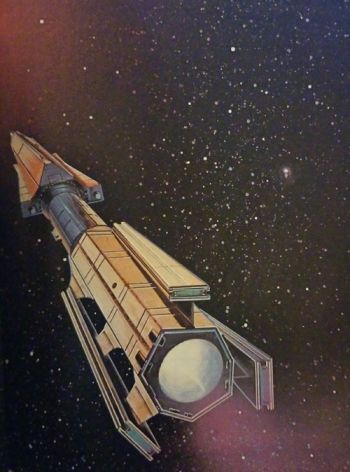Rapid improvements in warp drive technology resulted in the launch of the advanced Verne class cruiser on Reference Stardate 0/6410 (May 2079), which boasted a crew complement of 112. It was noteworthy as the first warp-capable class equipped with launch tubes and thermonuclear hydrogen-fusion torpedoes. The class also featured separated multi-drive warp engines, which used a 35:1 intermix ratio and provided for a much more efficient warp drive. The class would see 120 built, and would remain in service until 2141.[1][2]
Verne class vessels
Specifications
| 236m
|
| 80.4m
|
| 50m
|
| 25 million kg
|
|
|
| Warp Celestial Guidance
|
| Particle Subcarrier Radiotelemetry
|
| Independent Thought Memory Scan
|
- 8 forward lasers
- 50 fusion torpedoes
|
| .5-1.0g
|
| 24% O2; 11% humidity
|
| 5.3 years at Standard Ship's Complement
|
Notes
FASA Timeline
Rapid improvements in warp drive technology resulted in the launch of the advanced Verne class cruiser on Reference Stardate 0/6410 (October 2064), which boasted a crew complement of 112. It was noteworthy as the first warp-capable class equipped with launch tubes and thermonuclear hydrogen-fusion torpedoes. The class also featured separated multi-drive warp engines, which used a 35:1 intermix ratio and provided for a much more efficient warp drive. The class would see 120 built, and would remain in service until 2095.[1][2]
Verne class vessels
Specifications
| 236m
|
| 80.4m
|
| 50m
|
| 25 million kg
|
|
|
| Warp Celestial Guidance
|
| Particle Subcarrier Radiotelemetry
|
| Independent Thought Memory Scan
|
- 8 forward lasers
- 50 fusion torpedoes
|
| .5-1.0g
|
| 24% O2; 11% humidity
|
| 5.3 years at Standard Ship's Complement
|
References

